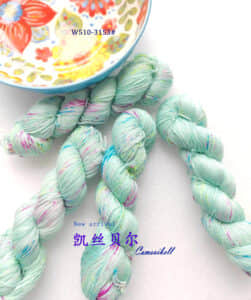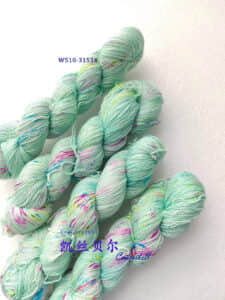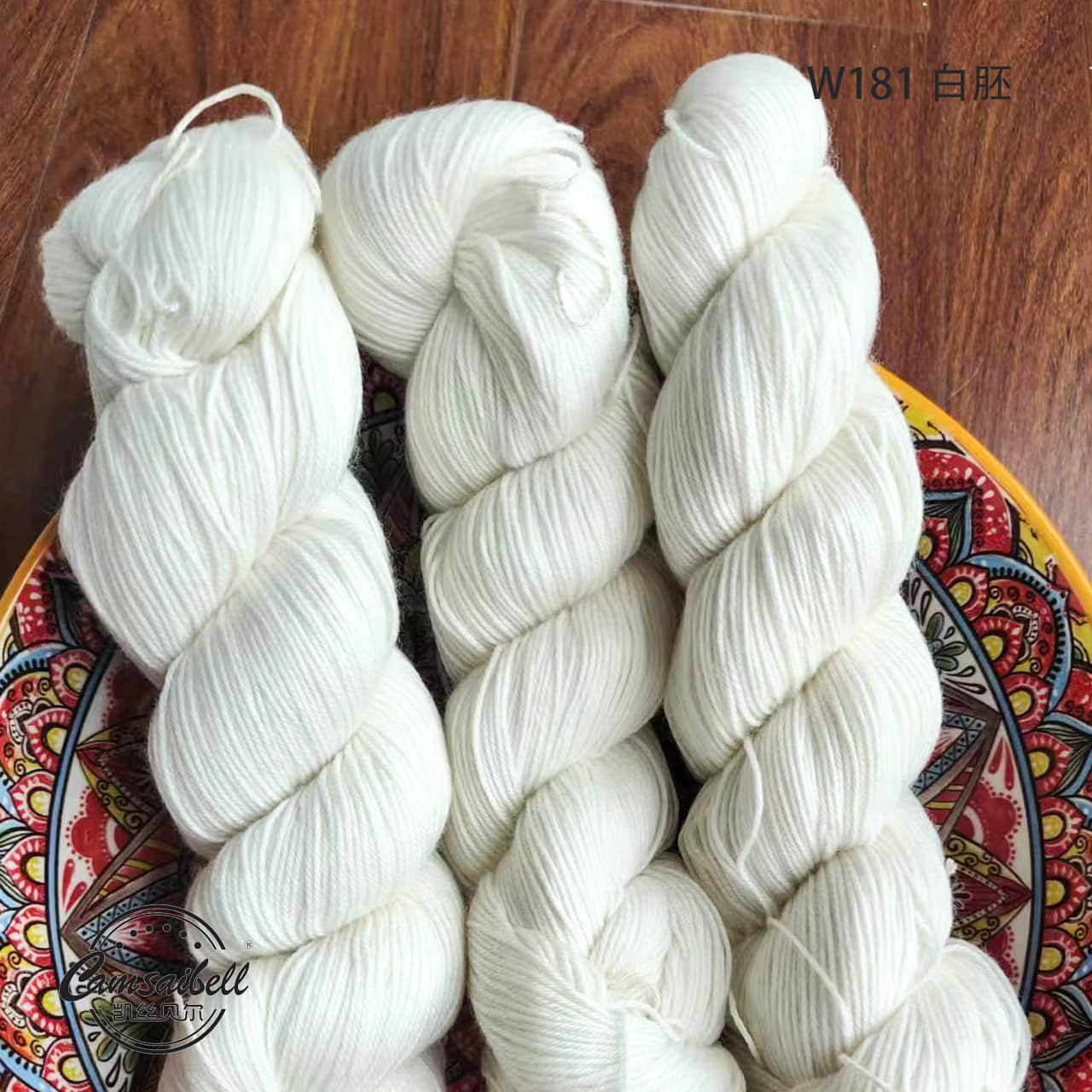I. Introduction
China has a rich tradition of hand-dyeing yarn, a practice that weaves together artistry, culture, and craftsmanship. In this exploration, we delve into the fascinating world of China’s hand dyed yarn and uncover the most popular natural dye materials that have been cherished for generations. From time-honored techniques to contemporary innovations, the use of natural dyes contributes to the unique and diverse tapestry of Chinese yarn craftsmanship.

II. Traditional Methods of Hand-Dyeing Yarn in China
Before delving into the specific natural dye materials, it is essential to understand the traditional methods employed in hand-dyeing yarn in China. These methods passed down through generations, involve intricate processes that contribute to the distinctiveness of Chinese hand dyed yarn.
A. Tie-Dye Techniques
Tie-dyeing is a traditional Chinese method that involves tying sections of yarn tightly with thread before immersing them in dye. This technique creates mesmerizing patterns as the dye seeps into the untied portions, leaving unique designs on the yarn.
B. Immersion Dyeing
In immersion dyeing, yarn is submerged entirely into a vat of dye, allowing for an even and thorough color absorption. This method is often used for achieving solid colors or gradient effects in Chinese hand dyed yarn.
C. Brush Application
Brush application involves manually applying dye to specific sections of the yarn using brushes or other tools. This method allows for intricate detailing and is often employed for creating hand-painted yarn with elaborate designs.
III. Most Popular Natural Dye Materials
A. Indigo
Indigo is a quintessential natural dye material in China, deeply rooted in history. Derived from the leaves of the indigo plant, this dye imparts rich blue hues to the yarn. The indigo dyeing process involves fermentation and oxidation, contributing to the unique character of indigo-dyed Chinese yarn.
B. Chinese Gallnut
Chinese gallnut, also known as Wupei, is a natural dye material with a long history of use in China. Extracted from the galls formed on Chinese sumac trees, this dye produces shades of brown and black. Chinese gallnut is often favored for its ability to create deep, earthy tones in hand dyed yarn.
C. Turmeric
Turmeric, a vibrant yellow spice, is utilized as a natural dye material in China. Known for its anti-inflammatory properties, turmeric imparts warm and sunny hues to the yarn. The dyeing process involves extracting the color from turmeric roots, offering a natural and eco-friendly option for hand dyed yarn.
D. Madder Root
Madder root has been a cherished dye material in Chinese textile traditions for centuries. Extracted from the roots of the Rubia plant, the madder root produces a range of red and orange tones. The dye is often used in combination with other natural materials to achieve a diverse color palette.
E. Sappanwood
Sappanwood, derived from the heartwood of the Caesalpinia sappan tree, is a natural dye material known for its reddish-brown hues. With a history dating back to ancient times, sappanwood continues to be a popular choice in Chinese hand tinted yarn, contributing to warm and earthy color variations.

IV. Contemporary Innovations in China Hand Dyed Yarn
While traditional methods and natural dye materials form the foundation of China’s hand tinted yarn legacy, contemporary artisans are infusing innovation into this age-old practice. Advancements in technology, a growing emphasis on sustainability, and a desire for unique aesthetics have led to the exploration of new dye sources and techniques.
A. Tea as a Dye
Tea, an integral part of Chinese culture, has found its way into the realm of hand tinted yarn. Artisans are experimenting with different types of tea, such as black, green, and oolong, to achieve subtle and organic variations in color. This innovative approach aligns with the sustainable ethos of traditional Chinese craftsmanship.
B. Herbal Dyes
The use of herbal dyes is gaining traction in contemporary Chinese hand dyed yarn. Extracts from herbs such as lavender, chamomile, and eucalyptus are being explored for their aromatic qualities and the soft, natural colors they impart to the yarn. This shift towards herbal dyes reflects a growing interest in eco-friendly and health-conscious dyeing practices.
C. Plant-Based Indigo Alternatives
In response to the demand for sustainable practices, artisans are exploring plant-based alternatives to traditional indigo dye. Plants like Polygonum tinctorium, commonly known as Japanese indigo, offer a renewable and eco-friendly option for achieving the iconic blue hues associated with indigo-dyed yarn.
V. The Cultural Significance of Natural Dyeing in China
Beyond the artistic and technical aspects, the practice of hand-dyeing yarn in China carries profound cultural significance. It serves as a tangible link to the country’s rich history, traditions, and the interconnectedness of art and daily life.
A. Symbolism in Colors
Colors play a symbolic role in Chinese culture, and the use of natural dye materials adds layers of meaning to hand dyed yarn. Red, for example, is associated with good luck and celebration, while yellow represents wealth and prosperity. Understanding the cultural symbolism of colors enhances the depth and intentionality of hand dyed yarn creations.
B. Preservation of Cultural Heritage
The continuation of hand-dyeing traditions preserves cultural heritage in a rapidly changing world. Artisans who master these techniques contribute not only to the beauty of hand dyed yarn but also to the transmission of knowledge from one generation to the next. This preservation ensures that the stories embedded in the colors and patterns of hand dyed yarn endure over time.
VI. Conclusion
In conclusion, the art of hand-dyeing yarn in China is a tapestry woven with threads of tradition, innovation, and cultural significance. The most popular natural dye materials, from indigo and Chinese gallnut to turmeric and madder root, have stood the test of time, creating a vibrant spectrum of colors. Contemporary innovations, rooted in sustainability and artistic expression, add new dimensions to this ancient craft. As artisans continue to explore the possibilities of hand dyed yarn, they simultaneously weave the fabric of China’s cultural heritage into every dyed strand.





